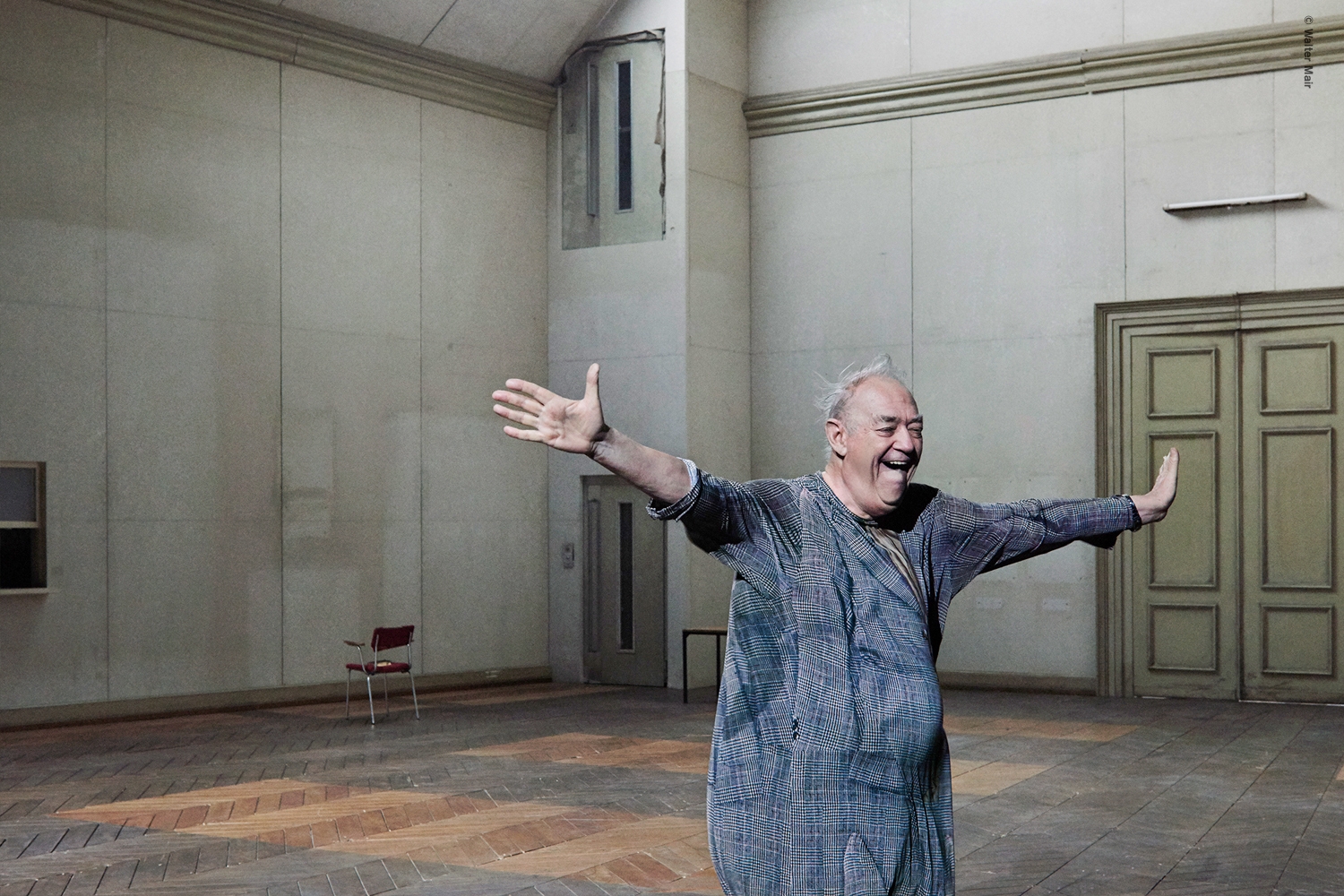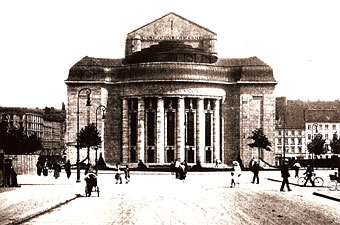


The Volksbühne [theatre of the people] was designed by Oskar Kaufmann and built during the years 1913 to 1914 in Berlin’s city centre. The slogan “Die Kunst dem Volke” [Art to the people] was engraved on the front of the edifice. “Volksbühne” literally meant that the working classes founded a cultural society and donated their membership subscriptions for theatre productions which, in turn, could be attended by the members of the club at a reduced rate. The idea was that workers - organised and led by the social democrats - should get access to and participate in Berlin’s cultural life. As early as 1890 workers could thus afford to visit a theatre offering a contemporary, politically oriented programme, and their membership fees helped to finance their own playhouse. Between 1915 and 1918, under artistic director Max Reinhardt, well-known actors like Emil Jannings, Ernst Lubitsch, Paul Wegener, Eduard von Winterstein, and Werner Krauss played on the theatre’s stage, located at Bülowplatz (as Rosa-Luxemburg-Platz was known at the time). In 1924 Erwin Piscator took over as Volksbühne’s artistic director. Famous for his startling and controversial productions, he developed the concept of the “Proletarian theatre” and also coined the term “epic theatre”, later adopted by Bertolt Brecht as a central concept in his theory of the theatre and in his plays.
It was (and still is) here at Volksbühne where the boundaries of the theatre genre were expanded and redefined: the first multi-media theatre production was realised at Berlin’s Volksbühne employing slides and film projections on stage, and Piscator’s idea of a “totalizing theatre” also evolved here, still serving as the quintessential motto for most projects.
During the Nazi regime, the Volksbühne was renamed “Theater am Horst-Wessel-Platz” [after a Nazi activist] due to gleichschaltung and enforced conformity pressure which hit the major stages throughout the country. The sad story of the UFA celebrity and Volksbühne actor Joachim Gottschalk, who was harassed and sidelined by the Reich minister of propaganda, Goebbels, is well-known: He committed suicide along with his Jewish wife and son Michael in 1941. As one of the first DEFA productions in the GDR, the Gottschalks’ tragic fate was recounted and made into a film by Kurt Maetzig in 1947.
Shortly before the end of World War II, Volksbühne was almost completely destroyed and rebuilt between 1950 and 1954 in a plainer, more sober architectural style. As one of the leading theatres in the capital of the GDR, the Volksbühne made its mark by explicitly linking and blending contemporary plays with the avant-garde strategies of a director’s theatre. The productions of prestigious directors such as Heiner Müller, Benno Besson and Fritz Marquardt set new standards in the world of the theatre.
Frank Castorf has been artistic director ever since 1992, and along with his own productions, the works of Christoph Schlingensief, Johann Kresnik and Christoph Marthaler helped shaping the profile of Volksbühne during the 1990s. Today, the works of internationally acclaimed directors like Dimiter Gottscheff, Herbert Fritsch and René Pollesch characterise the theatre’s programme. Also the long-standing collaborations with artists and performers such as Gob Squad or the directors Vegard Vinge and Ida Müller at Volksbühne’s Prater studio have proved a great success.